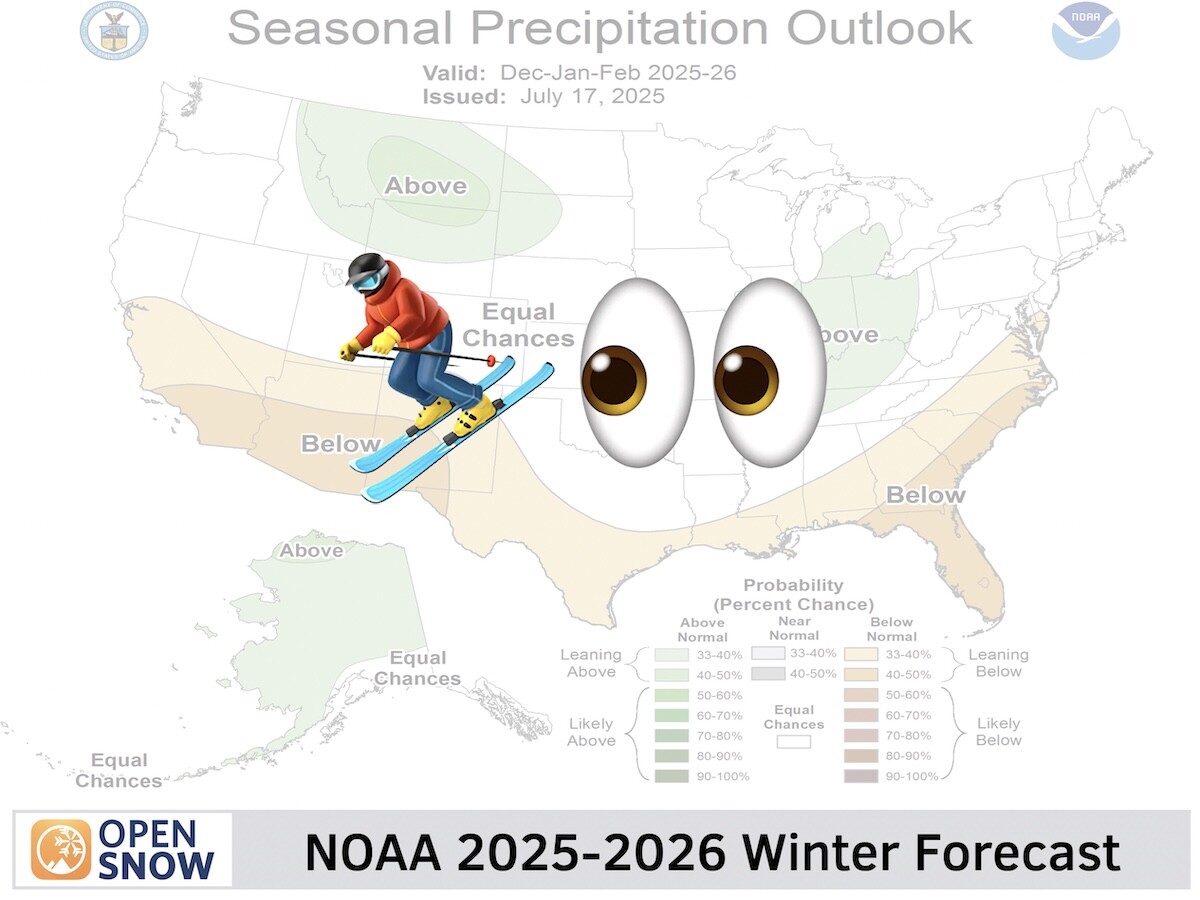Western US Daily Snow

By Alan Smith, Meteorologist Posted 1 year ago July 17, 2024
T-Storms Favoring Colorado & New Mexico, Wildfires in the Northwest
Summary
An uptick in moisture will lead to an active thunderstorm period across Colorado & New Mexico, with more isolated activity for Utah and Arizona as well as the Northern Rockies. A heat wave will persist across the Interior Northwest, where fire activity has increased in recent days. This region will also see smoky conditions.
Short Term Forecast
Big Picture Weather Pattern:
A relatively modest monsoon pattern will continue across the Southwest with terrain-based thunderstorms, while more isolated activity will reach the Cascades and Northern Rockies. A cold front along the eastern slopes of Colorado and New Mexico will act as a focal point for more numerous thunderstorms compared to neighboring western states.
Hot and dry conditions will prevail across the Interior Northwest, with elevated fire and smoky conditions. The potential for dry thunderstorms could also exacerbate fire behavior and potentially contribute to new fire starts.

5-Day Precipitation Forecast:
Rainfall over the next 5 days will favor Colorado and New Mexico, with more scattered amounts elsewhere across the West.

5-Day Temperature Departure from Average:
Temperatures will cool off significantly near and east of the Divide in Colorado and New Mexico. However, temperatures will remain well above average across the Interior Northwest, which will not help in terms of fire danger.

Fire and Smoke Outlook:
A recent uptick in fire activity has occurred in Oregon, Idaho, and Montana. Smoke has also become heavier and is impacting more areas across the Interior Northwest and Northern Rockies. Some of this smoke will drift southward into Salt Lake City and Northern Utah at times.
High-Res Smoke (Surface) Forecast Map for Midday Wednesday:

Forecast for Wed (Jul 17) to Thu (Jul 18):
Thunderstorm activity will favor Colorado and New Mexico, and to a lesser extent, Utah, Arizona, and Wyoming. Some models are projecting enough moisture to reach the Sierra for some isolated storms by Thursday. Isolated dry thunderstorms are also expected in the Cascades and far Northern Rockies.

Let's take a look at rainfall projections by region, to get an idea of which locations will be more favored for thunderstorms.
Colorado:
Rainfall will favor the Front Range, Sawatch Range, Sangre de Christo Range, and Eastern/Southern San Juans with fewer and lighter storms elsewhere. Locally heavy rain is possible, especially in the Southern Sangres.

New Mexico:
Thunderstorm activity will favor the Sangres in Northern New Mexico with locally heavy rain possible, but all areas of the state will see an uptick in activity compared to previous days.

Here is our hourly rainfall and lightning forecast for Wheeler Peak on Wednesday:

Utah:
Scattered terrain-driven thunderstorms can be expected, with the heaviest rainfall expected in the Uintas. Isolated flash flooding will remain a possibility in canyon country, however, especially on Thursday.


Arizona:
Thunderstorm activity will largely be concentrated along the Mogollon Rim as well as the Flagstaff area. Most storms will produce short-lived light to moderate rain, but locally heavy downpours are possible.

Northern Rockies:
Thunderstorms will favor the Bighorns, Winds, and Absarokas (just east of Yellowstone), and to a lesser extent Yellowstone itself. The Tetons as well as most major mountain ranges in Idaho and Montana will see more isolated activity.

Forecast for Fri (Jul 19) to Sat (Jul 20):
The pattern will change very little with a typical monsoonal moisture circulation across the Southwest, with thunderstorm activity and rainfall amounts favoring Colorado and New Mexico more than other areas.
The Sierra and the SoCal Mountains will see an uptick in thunderstorm activity, while the Pacific Northwest will see minimal thunderstorm chances.

Forecast for Sun (Jul 21) to Mon (Jul 22):
A ridge of high pressure will build over the Far West, which could lead to fewer/more isolated thunderstorms west of the Divide in Colorado due to a drier northerly flow. The northerly winds could potentially bring some smoke southward into parts of Utah and Colorado – something that will need to be watched as we get closer.
Most areas West of the Divide will hang onto isolated thunderstorm chances in general, with higher odds of thunderstorms and locally heavy rain near/east of the Divide in Colorado and across a large portion of New Mexico.

Extended Forecast
Outlook for Tue (Jul 23) to Sat (Jul 27):
A drying trend is expected east of the Continental Divide during this period with a seasonal monsoonal flow (moisture levels near average) favoring areas west of the Continental Divide across the Southwest. The Sierra and Central/Northern Rockies will be on the edge of this pattern with isolated thunderstorms possible.
Most of the West looks to stay warmer than average, except for New Mexico and the coastal Pacific Northwest where temperatures will be near average.

Thanks so much for reading! Next update on Friday (July 19).
Alan Smith
About Our Forecaster




